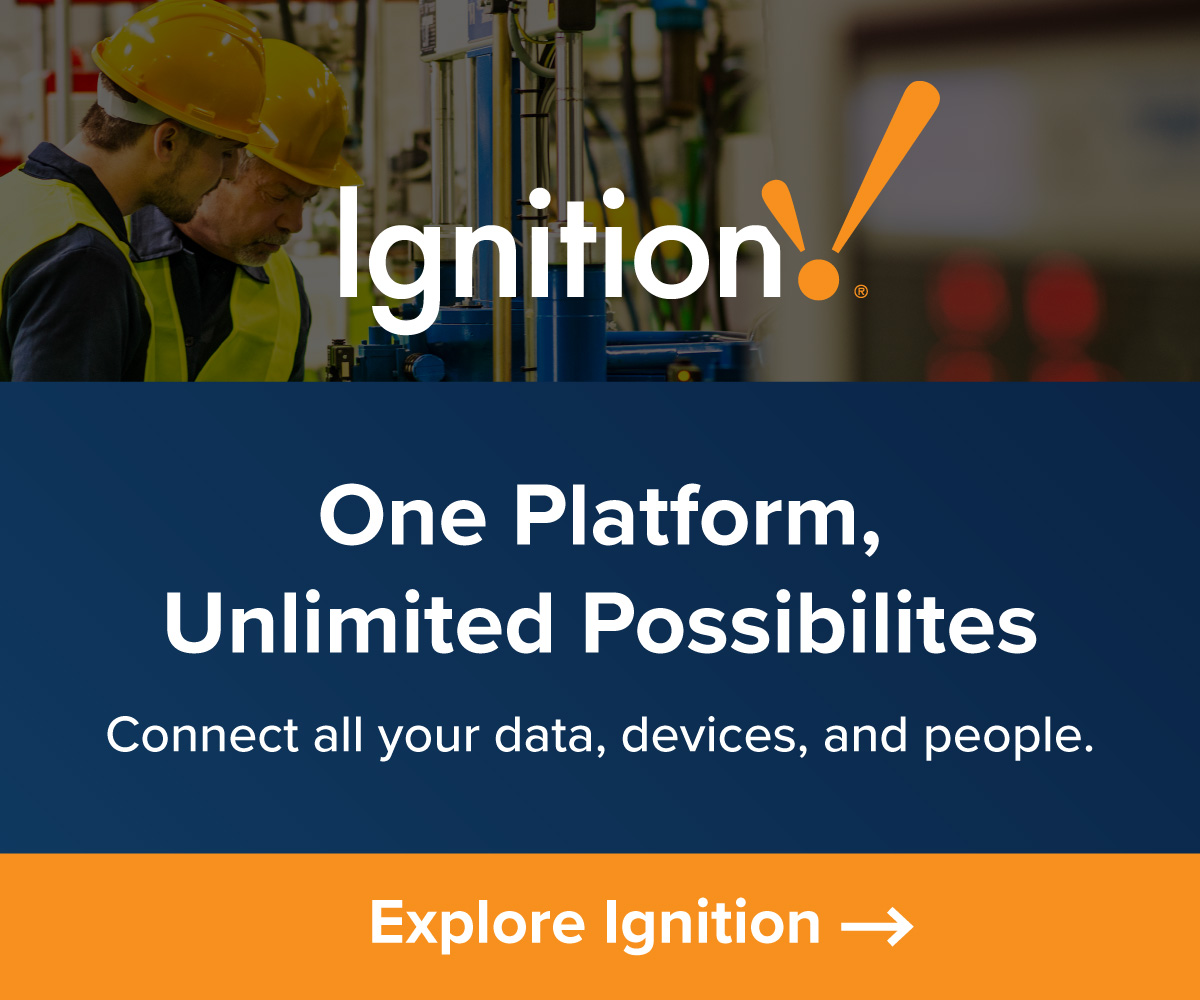by Gary Mintchell | Oct 28, 2025 | Asset Performance Management, Data Management, Manufacturing IT, Software
AVEVA updated its software offering by converging all data into its Connect platform.
AVEVA is converging all data onto CONNECT industrial intelligence platform. Through enhancements to AVEVA Asset Information Management, AVEVA System Platform and AVEVA PI Data Infrastructure, AVEVA can enable the visualisation of engineering and operations data in one interface. This offers organisations the ability to scale digital twin solutions more flexibly and reduce IT overhead.
At this year’s Schneider Innovation summit, AVEVA is showcasing its solutions and vision for its industrial digital twin.
For AVEVA Asset Information Management, the new enhancements will bring together trusted asset contexts, accessible through the CONNECT visualisation offering a single flexible and unified UI to visualise trusted engineering, asset and maintenance data. From P&IDs, drawings, and documents to real-time sensor readings, process events, and historical performance metrics, teams can view and analyse all relevant data in one place.
Meanwhile, AVEVA PI Data Infrastructure is an ever-advancing modern and flexible foundation for rapidly connecting, contextualising and acting on industrial insights from operations data. Its sophisticated data management capabilities continue to drive value across enterprises and new enhancements ensure enhanced hybrid connectivity, visualisation and analytics for AVEVA’s industrial digital twin.
Click on the Follow button at the bottom of the page to subscribe to a weekly email update of posts. Click on the mail icon to subscribe to additional email thoughts.
by Gary Mintchell | Oct 14, 2025 | Generative AI, Manufacturing IT, Operations Management, Software
I am passing this on from the Peter Diamandis newsletter. I don’t think I can link, but click the link on his name to go to his website and sign up. Diamandis sometimes climbs over-the-top optimistic. But that’s a great counter to the usual cynicism and negativity and dysfunctional thinking prevalent in today’s society.
Understanding artificial intelligence (called by Om Malik “augmented intelligence” and by others as neither artificial or intelligent) today requires a healthy dose of realistic thinking and perspective. I offer these thoughts as a counter to your usual AI hype.
Traditional companies are failing to implement AI effectively. Here are five principles to make the technology actually work for you…
1/ AI problems are rarely AI problems – they’re strategy problems disguised as technology problems. Most organizations fail at AI implementation not because they chose the wrong models or hired the wrong engineers, but because they never clearly defined what business problem they’re solving. They see competitors “using AI” and panic-buy solutions for problems they can’t articulate.
2/ Budget size is inversely correlated with AI success. The companies throwing millions at AI initiatives are systematically outperformed by teams running on shoestring budgets with clear mandates.
3/ The 10x rule is the only rule that matters for AI adoption. Anything less than a 10x improvement in speed, cost, or quality is organizational noise. Most AI projects deliver 20-30% improvements that get lost in measurement error and change management overhead.
4/ Competitive intelligence is your fastest path to AI advantage. While you’re debating whether to build or buy, your smartest competitors are already shipping AI-powered solutions.
5/ Pirates beat committees every time. The worst way to implement AI is through enterprise-wide initiatives with steering committees and governance frameworks. Instead, empower your teams from the ground up. Recent studies indicate some alarming news:
- 42% of executives say the process of adopting generative AI is tearing their company apart
- 41% of Millennial and Gen Z employees admit they’re sabotaging their company’s AI strategy
- What’s needed is to enable small teams, “pirate ships,” to move at startup speed (within enterprise contexts). Small teams are optimized to experiment and learn rather than aim for consensus. Give them a problem, a budget, and air cover, then get out of their way.
Here’s the key implementation insight: AI amplifies existing organizational capabilities (and dysfunctions).
by Gary Mintchell | Oct 13, 2025 | Cloud, Manufacturing IT, Software
Another example of a long-term partnership between a large software company and a smaller, innovative software company. This one links AVEVA (think former Wonderware and Schneider Electric) and TwinThread. I cannot believe I haven’t written more about TwinThread before. I know I’ve talked with the founder/CEO Erik Udstuen, whom I knew at Mountain Systems and GE. They were early into the race for a specifically industrial cloud platform.
This news concerns something called an Advanced Analytics solution. This solution targets improving operational efficiency, product quality, and energy usage. They say this underscores the value of AI-powered analytics in driving smart, sustainable industry.
AVEVA Advanced Analytics is a no-code, cloud-native Software-as-a-Service (SaaS) solution designed to transform raw industrial data into actionable insights. When integrated with CONNECT —AVEVA’s industrial intelligence platform—and our hybrid offerings AVEVA PI Data Infrastructure or AVEVA Operations Control, the complete solution empowers industrial teams with real-time, predictive analytics to make informed, proactive decisions.
Key Benefits Realized by Customers:
- Improved Product Quality: Manufacturers have achieved up to 100% first-pass yield, significantly reducing scrap and rework.
- Increased Uptime: Deployment has led to a 12% rise in equipment uptime, improving overall production efficiency.
- Energy Optimization: Clients report an average 4% reduction in energy consumption, supporting both cost reduction and sustainability goals.
- Accelerated ROI: Several organizations experienced a tenfold return on investment within their first year of adoption.
Making a bow toward competition featuring innovative pricing opportunities for customers, the note: AVEVA Advanced Analytics is available through the flexible and scalable AVEVA Flex subscription program, making it easy for businesses of all sizes to adopt cutting-edge analytics, and scale up to build upon successes.
Click on the Follow button at the bottom of the page to subscribe to a weekly email update of posts. Click on the mail icon to subscribe to additional email thoughts.
by Gary Mintchell | Sep 30, 2025 | Automation, Manufacturing IT, Software
Almost all press releases refer to AI. Everyone has AI. Suddenly, everyone has Agentic AI.
I researched the topic. Look for specific instances of where AI helps. Agentic AI will make specific decisions automatically. Look for these specific examples. Most (all?) AI works best when constrained into an application, not broadly applied.
This announcement references Model Context Protocol (MCP)—a good thing.
It’s so easy to be skeptical of news releases. Just read carefully—and if you are in the market, probe the sales engineer deeply.
SymphonyAI announced IRIS Foundry for Microsoft Teams, integrating industrial AI directly into Microsoft Teams and Microsoft 365 Copilot via the Model Context Protocol (MCP). Optimized for the complex demands of manufacturing and energy companies, the integration delivers real-time operational visibility, automated workflows, and AI-driven insights—directly inside the tools plant operators, industrial workers, and frontline teams use every day.
Industrial teams often waste time switching between maintenance systems, data historians, and analytics dashboards. With IRIS Foundry integrated using MCP, these capabilities are surfaced within Microsoft Teams, letting users:
- Ask plain-language questions in Microsoft 365 Copilot such as, “Show me recent heat exchanger anomalies at Plant 7,” and instantly receive visual summaries within Teams.
- Trigger automated workflows to initiate maintenance, adjust parameters, or escalate alerts—without leaving Microsoft Teams.
- Customize domain-specific AI assistants using Microsoft Copilot Studio so companies can match plant-specific KPIs, workflows, and compliance needs.
IRIS Foundry MCP Server unifies complex energy and manufacturing data and surfaces it in context:
- Data Contextualization and Unified Namespace: Turn raw data into meaningful context linked to assets, processes, and events, while giving streamlined, structured access to real-time and historical information in a publish-subscribe architecture.
- Knowledge Graph and Cortex AI: Leverage semantic relationships between equipment, events, people, and documentation to power Cortex—IRIS Foundry’s AI engine for intelligent reasoning, search, and recommendations.
- Predictive Analytics and Asset Intelligence: Continuously analyze equipment performance, predict failures, and surface anomalies with contextual alerts automatically routed to relevant Teams channels via MCP.
- Process and Operations Intelligence: Track KPIs, identify performance trends, and enable predictive insights across production lines and plants through conversational interactions in Teams and Copilot.
by Gary Mintchell | Sep 19, 2025 | Commentary, Manufacturing IT, News, Software
Talking with colleague David Greenfield of Automation World at the very successful Inductive Automation ICC 2025 event about what happened to main competitors. There once was Wonderware (a pioneer) who eventually wound up under AVEVA. Then there was GE (Fanuc/Intelligent Platforms/Digital/Vernova) home of their Cimplicity and Intellution’s iFix which sort of blended into Proficy.
David tapped my shoulder. He had an email where the person wanted to discuss the future for iFix and Cimplicity. I turned around, checked my email, and had an invitation to sponsor an AVEVA one-day conference in Houston. How about that for synchronicity? A bit later I saw that GE Vernova has sold the HMI/SCADA/MES business (Proficy) to an investment firm, TPG. No wonder they sent an email to assure people about the future of their products.
I’ve pasted some of the press release below. I’m not surprised that Vernova is divesting this business. I am amazed that they are getting $600 million for it. That’s a lot of money for software that hasn’t made much of a splash in the market for several years. (When I was bouncing from one entrepreneurial start up to another in the 80s and 90s, why didn’t one of us get something akin to that size of a bail out?)
Oh, and, no, I’m not sponsoring the AVEVA Energy Day in Houston next month. Hint: they should sponsor me 😉
Bullet points in brief:
- Transaction will establish manufacturing software business as leading independent industrial technology solutions provider.
- Proficy software technology portfolio solves some of the toughest challenges in manufacturing, infrastructure, and other industries.
- GE Vernova retains its Electrification Software business focused on developing solutions to help customers electrify and decarbonize the energy ecosystem.
Note: there is much of the usual PR fluff in this release:
GE Vernova Inc. (NYSE: GEV) and TPG, a leading global alternative asset management firm, announced today the signing of a binding agreement confirming the intent under which TPG will acquire GE Vernova’s Proficy® manufacturing software business (“Proficy”) for $600 million. GE Vernova may receive additional sale proceeds in the future depending on various outcomes and conditions. TPG will invest in Proficy through TPG Capital, the firm’s U.S. and European private equity platform.
The proposed transaction would establish Proficy as a standalone software business that helps its more than 20,000 customers manage complexity, enable greater efficiency, and improve connectivity across their industrial operations. Proficy’s software portfolio solves industrial challenges across discrete, process, and hybrid manufacturing, as well as metro transit and other infrastructure applications. Its fully integrated solutions include cloud-based and on-prem HMI/SCADA, MES, industrial data management, and analytics, offering architectural flexibility from equipment to the production line, plant, and full enterprise. In partnership with TPG, Proficy would continue to deliver enhanced and expanded offerings that meet the evolving needs of teams across the broader manufacturing and infrastructure sectors. This manufacturing software business currently comprises approximately 20% of GE Vernova’s Electrification Software revenues.
“We are excited to reach this agreement with TPG to position the Proficy business for independent success, while also generating significant proceeds for GE Vernova to reinvest in our core businesses,” said Scott Strazik, CEO of GE Vernova. “The Proficy portfolio provides critical tools for manufacturing and production customers around the world, and I’m confident that TPG will help this important business continue to grow and meet the expanding needs of the industry. GE Vernova remains focused on delivering solutions to help customers electrify and decarbonize the energy ecosystem, including growing GridOS®, our enterprise software and AI platform for grid orchestration. We recently expanded GridOS through our acquisition of Alteia, an AI computer vision and machine learning company, as we continue to position that business for the future.”
“Manufacturing is undergoing a renaissance driven by customers’ need to increase throughput, optimize operations, and augment workforces. Proficy’s mission-critical, integrated, and increasingly AI-enabled solutions are leading the way, enabling customers to run, monitor, and improve the production process,” said Art Heidrich, Partner at TPG. “We are excited to partner with GE Vernova and Proficy’s leadership team to accelerate growth and power customers’ digital evolutions.”
TPG has deep experience executing corporate carveouts to support and grow innovative software businesses, with investments that have included Boomi, Elite, Everfox, Hospitality Solutions, McAfee, and Wind River.
Upon the successful completion of the proposed transaction, TPG would own and control the Proficy business and GE Vernova would retain a board observer seat. The proposed transaction is subject to information and consultation with employee representatives and other customary closing conditions, including certain regulatory approvals, and is expected to close in the first half of 2026.
Evercore and Morgan Stanley & Co. LLC are serving as financial advisors to GE Vernova. Centerview Partners LLC is serving as lead financial advisor to TPG, and William Blair is also serving as financial advisor to TPG.
by Gary Mintchell | Sep 18, 2025 | Podcast, Software
ICC 2025 Recap
I recorded this as I was leaving Inductive Automation’s Ignition Community Conference 2025 in Sacramento. The event team performed wonderfully moving ICC from the smaller Harris Center in Folsom to the SAFE Credit Union Convention Center in Sacramento with double the attendance. Lots of energy, many partners. The event had to be credited a success. Of course, the highlight was introduction of Ignition 8.3. This update included many long-sought additions. Note: Inductive Automation has been a long-term sponsor for my work. However, we do not have an “influencer” relationship, that is, they do not pay me for writing content. They just appreciate my work. If this information is useful, please pass along.
You can listen as a podcast (and subscribe).
Or watch on YouTube (and subscribe).





